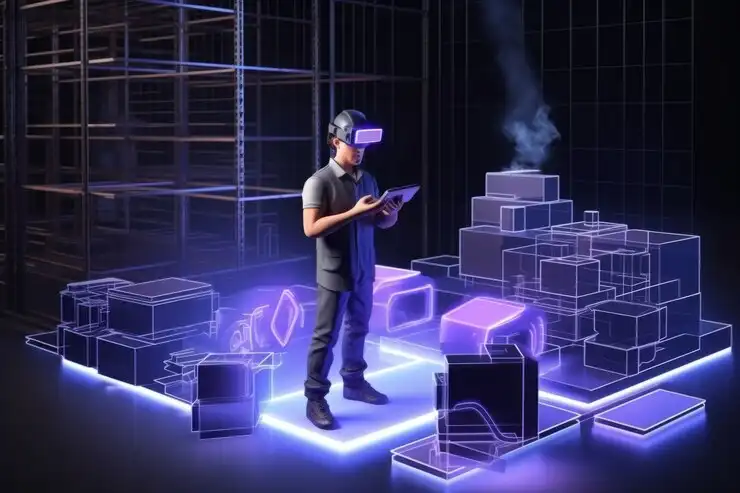
Blog
Developing Virtual Reality Technologies Potential

The technology known as virtual reality (VR) has quickly become a disruptive force in many different industries, completely changing how we interact and perceive digital material. Virtual reality (VR) has opened up new avenues for creativity, innovation, and education. These include immersive gaming experiences, virtual training simulations, and architectural visualization. We will look at the potential of virtual reality technology and how it affects different industries in this blog post. .
Engaging Video Games.
Gaming has never been more immersive thanks to virtual reality, which gives users access to previously unimaginable virtual worlds. Gamers can explore beautiful settings, go on exhilarating adventures, and interact in real-time with lifelike characters by using VR headgear and motion-tracking controllers. Virtual reality gaming offers players a world of possibilities, from thrilling action shooters to calm exploration games, all of which offer unmatched immersion and excitement.
Improved Instruction and Modeling.
In fields including healthcare, aviation, and the military, virtual reality technology has completely changed training and simulation. Professionals can practice difficult procedures, polish their abilities, and recreate real-world circumstances in a secure and controlled environment by using VR-based training packages. Virtual reality (VR) provides a realistic and affordable training option that helps increase performance and improves learning outcomes, whether it is used for combat training for troops, flying training for pilots, or surgical simulations for medical students.
Design and Visualization of Architecture.
Virtual reality has emerged as a crucial technology for the visualization and presentation of architectural thoughts and designs in the fields of architecture and design. Before construction starts, clients may explore virtual structures, interiors, and landscapes thanks to the immersive VR experiences that architects and designers can develop. With VR technology, stakeholders may experience environments in a way that is not possible with traditional 2D drawings or renderings, detect design problems, and make educated decisions. Virtual reality visualization is revolutionizing the way architects work with customers and communicate, whether in residential or commercial settings.
Virtual Travel and Discovery.
People may visit locations all over the world and take virtual tours from the comfort of their homes with virtual reality. VR travel experiences offer a sense of presence and immersion that traditional travel media cannot match, allowing users to view famous landmarks, natural marvels, and cultural places in breathtaking detail. Virtual tourism encourages visitors curiosity, empathy, and understanding by providing a window into far-off locations and cultures.
Rehabilitation and Medical Therapy.
The use of virtual reality technology for therapy and rehabilitation in healthcare settings is growing. By providing immersive experiences and interactive activities, VR-based therapies can assist patients in managing pain, conquering phobias, and improving motor skills. Virtual reality (VR) has the potential to completely change the way healthcare is provided and enhance patient outcomes, from helping stroke patients with their physical rehabilitation to treating post-traumatic stress disorder (PTSD).
In summary.
Virtual reality technology is opening up new opportunities in a variety of sectors, including gaming and entertainment, healthcare, education, and other fields. VR is changing the way we interact with digital information and the world around us by simulating real-life settings, creating immersive experiences, and improving communication and learning. We may anticipate seeing even more ground-breaking developments and creative applications that fully utilize virtual reality as technology progresses and becomes more widely available.
4 Comments
Leave a Reply














Noah
Thanks for the fantastic ideas!
James
Thanks for the great tips overall.
Charles
Keep up the great work!.
Marie Johnson
Thank you for the detailed tutorial and creative ideas!